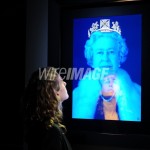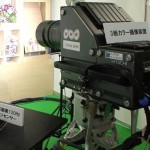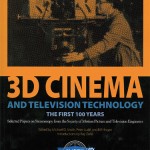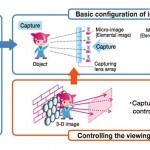Xpand 3D CEO Maria Costeira talks about challenges facing 3D
Speaking in Cannes, where XPAND 3D signed a new three year contract renewing its role as the technical partner, company CEO Maria Costeira, considers some of the main challenges facing the 3D market.
...
How much of the turnover of XPAND 3D is down to cinema? Given the many other fields in which you’re active, is cinema a core part of the company?
In terms of volume of units, it (cinema) is still a very significant part. We manufacture over a million units for cinemas worldwide in terms of pairs of glasses and systems. We have 6000 installations worldwide. That is growing, mainly due to China, India, South America (especially Brazil and Argentina) and Russia and Turkey. The volume of cinema is significant but it’s not the biggest field of the company.
If cinema isn’t driving 3D, what is?
It’s definitely home entertainment in the sense that there are so many TVs and laptops worldwide. For instance, we manufacture for HP. You just have to think that Hewlett Packard is the biggest manufacturer of laptops in the world. We have a computer we specifically design for them called the Envy. That came out 18 months ago, the first series. We manufacture for Phillips. If every single TV that goes out gets shipped with two pairs of glasses, you just have to multiply that. We do JVC, Mitsubishi and Toshiba. We do product design for the majority of consumer electronic brands in the world. XPAND is not a glasses company. Glasses is a means to an end. We have auto-stereoscopic devices, we have passive devices, we have medical devices that have nothing to do with 3D medical.
Is 2012 going to be a good year for 3D?
I think this year is going to be a good year. There are good movies. That’s not one Avatar but there is a serious line-up of solid movies. You will have a constant array of movies coming out during the summer months and over Christmas. I think that is going to sustain the growth of this box-office. Simultaneously, you have very good gaming. Gaming is the driver of all technology. Nobody likes to talk video gaming because (they think) it’s so kid driven. It’s not. Gaming is all about adults. Video games are going to drive a lot of the movies we are going to see at the box-office. TV business is back on track. In Japan and Korea, all displays being sold are 3D ready. That means you have a wide range of windows where you can be showing product. There are more 3D channels. Apple is coming in to 3D, YouTube is coming into 3D.
See the full interview here:
How I Stopped Worrying and Learned to Love 3-D
I am not afraid to admit it: I’m a fan of 3-D movies. At its best, 3-D can add a texture and layering to the visual narrative that a skilled director and editor can spin into magic. At its worst, though, 3-D is annoying and painful. I admit that I have seen some horridly bad 3-D movies recently, but the technology is still growing, and getting better all the time. After a recent tour of 3-D cinema equipment manufacturer 3ality Technica’s headquarters and an interview with their CEO Steve Schklair, I’ve seen where that future of 3-D is headed, and it’s looking very bright. ...
What I learned during my tour of 3ality Technica, though, enlightened me as to why some movies work with 3-D while others (excuse the pun) fall flat. It comes down to two different factors: how the film was created (filmed in 3-D or converted) and how it’s projected (active or passive). ...
In the United States, 3-D TV programming is a novelty at best. In the United Kingdom, however, BSkyB is experimenting with live 3-D sporting events, and broadcasting them in the pubs of London. They have sponsored 3-D nights, with free glasses provided, and according the Schklair, they are constantly sold out: “They even have an iPhone app that lets you locate the closest three pubs playing your game in 3-D based on the GPS data.”
There are still a lot of 3-D haters out there, and I’m not saying they have no reason to distrust 3-D. It’s off to a shaky start, mostly because the technology needed to properly render it has lagged behind the medium’s true capabilities. But the point of 3-D is not just to bring a sense of depth, but to bring us along into the movie, to feel a part of it in us. Bad 3-D makes this feel like a hollow goal, but when you get the good stuff, you’ll never forget it. I’m looking to a summer full of the good stuff.
See the full article here:
“Piranha” sequel is first 3D film to get early VOD release
...Meanwhile, the install base of 3D TV sets is actually growing.
So, for the first time ever this weekend, a release window for a 3D movie is going to collapse, with the Weinstein Company’s tongue-in-cheek horror sequel, Piranha 3DD, getting released through both cable/satellite and internet VOD on the same day it debuts in about 75 theaters.
Produced by Weinstein horror label Dimension Films, the movie will be distributed into the VOD market by Starz Media, with the company’s digital distribution arm renting the film via VOD for $6.99 ($7.99 for 3D) starting Friday through cable, satellite and telco TV service providers. (Purchasers have 30 days to watch it.)
The movie will also be rented through Amazon Instant Video, Facebook, Google Play/YouTube, iTunes, PlayStation Network, Vudu, and Xbox Live. ...
Read the full story here:
Queen Elizabeth II Goes 3D For Her Diamond Jubilee
 ...Artist Chris Levine has created “Equanimity,” a holographic portrait of the queen constructed from 10,000 pictures of the queen’s head at different angles, which sounds like it must have been really fun for the queen to sit through. Now, “Equanimity” is being combined with a replica of the diadem Queen Elizabeth II wore at her coronation. That replica, crafted by jewelers from Asprey, is made up of a ridiculous 1,000 plus brilliant-cut white diamonds and pearls, set in platinum. After being superimposed on “Equanimity,” the piece will be called “The Diamond Queen,” and will be on display at Asprey’s flagship store on Bond Street. After that, it will be on display for about one week at the Masterpiece fair in London. ...
...Artist Chris Levine has created “Equanimity,” a holographic portrait of the queen constructed from 10,000 pictures of the queen’s head at different angles, which sounds like it must have been really fun for the queen to sit through. Now, “Equanimity” is being combined with a replica of the diadem Queen Elizabeth II wore at her coronation. That replica, crafted by jewelers from Asprey, is made up of a ridiculous 1,000 plus brilliant-cut white diamonds and pearls, set in platinum. After being superimposed on “Equanimity,” the piece will be called “The Diamond Queen,” and will be on display at Asprey’s flagship store on Bond Street. After that, it will be on display for about one week at the Masterpiece fair in London. ...
See the full story here:
HOW TO COLOUR GRADE STEREOSCOPIC 3D FOOTAGE
 Following our interview with Pixmondo's VFX supervisor Ben Grossman – who won an Oscar for Hugo – about how to use stereoscopic 3D to subtly affect viewers emotions, we wanted to find out how other creative techniques are being used with the new medium. We caught up with colourist Dado Valentic of Mytherapy, who worked on many early IMAX 3D projects and mastered StreetDance 3D, the first British stereo 3D film, to find out how grading can be used artfully in 3D.
Following our interview with Pixmondo's VFX supervisor Ben Grossman – who won an Oscar for Hugo – about how to use stereoscopic 3D to subtly affect viewers emotions, we wanted to find out how other creative techniques are being used with the new medium. We caught up with colourist Dado Valentic of Mytherapy, who worked on many early IMAX 3D projects and mastered StreetDance 3D, the first British stereo 3D film, to find out how grading can be used artfully in 3D.
Dado says that there are a few technical challenges that need to be overcome first when working with 3D footage. The first is that because of the glasses audiences wear, 3D films and TV shows need to be a lot brighter than 2D productions. “You have to take parts of the image that will disappear into the darkness and make them visible again without creating a distortion,” he says.
Below Dado takes us through grading a shot from Jet Set Films using Blackmagic Design's DaVinci Resolve colour grading software. For each step we've placed the left eye frame first and the right eye second. ...
See the full story here:
Building a sci-fi TV show through an MMO (and vice versa)
 Building a massively multiplayer game on top of an existing science fiction universe is nothing new, as anyone who has played The Matrix Online, Star Wars Galaxies, or Battlestar Galactica Online can tell you. But with Defiance, MMO developer Trion Worlds is trying to create a new dynamic where events that happen in the game directly affect the plot and storylines in a concurrently running Syfy network TV show, and vice versa.
Building a massively multiplayer game on top of an existing science fiction universe is nothing new, as anyone who has played The Matrix Online, Star Wars Galaxies, or Battlestar Galactica Online can tell you. But with Defiance, MMO developer Trion Worlds is trying to create a new dynamic where events that happen in the game directly affect the plot and storylines in a concurrently running Syfy network TV show, and vice versa.
Already over four years in the making, the team behind Defiance is finally unveiling details about both the game (which will be available on PC, PS3, and Xbox 360) and the show, in advance of a planned April 2013 launch. Set in the near future, the world of Defiance is built on the premise of a group of alien ships crash-landing on Earth and terraforming the planet in significant and somewhat destructive ways.
At a press event, the show's creators stressed the human scale of what's essentially an immigrant drama, where the citizens ...
Read the full story here:
One Hundred Years of 3D
Edited by Michael D. Smith, Peter Lude and Bill Hogan, Society of Motion Picture & Television Engineers, ISBN 978-1-61482-900-3.
Capturing images in three dimensions has been around for a long, long time, and with the current interest by both cinema and television players, it's interesting to examine some of the technology and techniques used or suggested by players in 3D's far-reaching history.
The Society of Motion Picture and Television Engineers has been around for a long time, too (the organization will observe its 100th birthday in 2016), and has served as perhaps the largest disseminator of information on 3D.
SMPTE's recent publication of a large compendium of 3D papers should come as no surprise then, especially since its founder, C. Francis Jenkins, was a very early proponent of stereoscopic motion-picture imaging. The new 550-page book appropriately leads off with a description of a patent issued to Jenkins on July 5, 1898, "Device for Obtaining Stereoscopic Effects in Exhibiting Pictures," and follows this with the oldest 3D motion-picture paper published in the SMPTE Journal (then SMPE), Jenkin's "Stereoscopic Motion Pictures," which first appeared in the October 1919 issue.
REFLECTIONS ON THE STATE OF THE ART
The new SMPTE book doesn't stop with 3D history long past either. The final chapter in this massive volume (it's about the same size and weight of a ream of copy paper) is titled "Stereoscopic Imaging Evolves 1961—Present" and concludes with a paper from Lenny Lipton of taking 3D imagery into the digital cinema environment.
For the techno-historians in the crowd, the book is a must-have, as it includes reflections on the state of the art from such giants as Bell Labs' Herbert Ives.
Be advised that this is not the sort of book that you sit down with and finish in one evening. This thick tome contains more than 50 complete papers published in the SMPE and SMPTE Journals, as well as a number of "letters to the editor," discussions, and even reproductions of newspaper and other articles ...
See the entire article here:
The future of TV as seen in Super Hi-Vision – NHK
 ... Also known as Ultra HDTV, 8K, or just plain 7680 x 4320, Super Hi-Vision is NHK's proposed future high-definition TV format. To give you an idea of what those names and numbers amount to, a "Full HD" 1080p picture would take up just a sixteenth of a Super Hi-Vision screen. Last month the broadcaster demonstrated the format running on the world's largest plasma TV, a 145-inch behemoth from Panasonic that would entirely cover many living room walls. Viewing Super Hi-Vision content on the screen is a surreal experience — any closer than six feet or so and it's almost too much information to take in. ...
... Also known as Ultra HDTV, 8K, or just plain 7680 x 4320, Super Hi-Vision is NHK's proposed future high-definition TV format. To give you an idea of what those names and numbers amount to, a "Full HD" 1080p picture would take up just a sixteenth of a Super Hi-Vision screen. Last month the broadcaster demonstrated the format running on the world's largest plasma TV, a 145-inch behemoth from Panasonic that would entirely cover many living room walls. Viewing Super Hi-Vision content on the screen is a surreal experience — any closer than six feet or so and it's almost too much information to take in. ...
Super Hi-Vision has been successfully broadcast at 184Mbps using a dual-channel terrestrial signal, and NHK also demonstrated an IP transmission system that employs eight hardware H.264 encoders for use at live events. This will be put to the test during this year's Olympic Games in London, with NHK and the BBC collaborating on public Super Hi-Vision screens to be set up in Japan, the UK, and the US. ...
The format supports up to 22.2-channel surround audio, and NHK is working on ways to produce content complex enough to justify such a system. These range from a single-point microphone that can capture audio from 22 directions to a "reverberation device" that can control 3D sound. It's difficult to imagine significant uptake of 22.2 sound in the home, but it's pretty amazing to actually hear. ...
Read the full story here:
NHK Integral 3D
... Integral 3D, in short, is one of the most astonishing display technologies we've ever seen, even in its presently embryonic state. Instead of stereoscopic screens that use shutter glasses to direct alternate images into each eye, NHK's integral display uses thousands of microlenses to reconstruct a spatial 3D image filmed from multiple angles — the upshot is that you're able to adjust your perspective on the subject based on your position. For example, in a demonstration video of a baseball game, we were able to see offscreen fielders simply by tilting our head a few inches to the side, and footage of a sumo bout allowed for greater comprehension of the wrestlers' grapples and movement. It solves the problem of viewing angles on traditional 3DTVs, and transforms the experience of watching TV into something more involved.
Right now, the main drawback is the resolution. NHK's current integral 3D prototype actually employs Super Hi-Vision technology, but that's because each effective onscreen pixel requires hundreds more to render the multiple perspectives. As such, the image currently appears very grainy even on a screen of around 30 inches. While this could eventually be solved by a finer array of microlenses, each lens would then require more pixels in order to add the appropriate depth perspective. For now, integral displays aren't much more than a tantalizing glimpse into the far-off future — NHK doesn't expect the technology to be commercialized until around 2030.
See the original post here;



